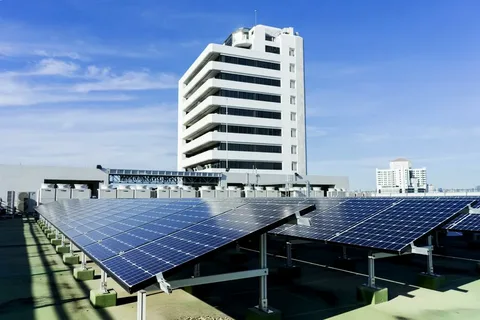As the world seeks cleaner, more sustainable energy solutions, commercial solar systems have become a focal point for innovation. Businesses and industries worldwide are turning to solar power not only to reduce their carbon footprint but also to optimize energy costs. The future of energy lies heavily in these evolving technologies, promising a smarter and greener tomorrow.
Advancements Driving the Future of Energy
Commercial solar systems have come a long way from their early iterations. Today’s innovations are geared towards increasing efficiency, reducing costs, and integrating seamlessly with existing energy infrastructures. Key advancements include:
- High-efficiency photovoltaic cells: New materials such as perovskite and bifacial solar panels enable higher energy capture from the same surface area.
- Energy storage solutions: Innovative battery technologies are allowing businesses to store excess solar energy more efficiently, ensuring power availability even during nighttime or cloudy days.
- Smart grid integration: Modern commercial solar systems can communicate with the grid, dynamically balancing supply and demand, and contributing to grid stability.
These developments are shaping the future of energy by making solar solutions more viable and attractive for commercial use.
Benefits of Next-Generation Commercial Solar Systems
The future of energy through commercial solar systems offers numerous benefits to businesses:
- Cost savings: Improved efficiency and energy storage reduce reliance on expensive grid power, lowering operational costs.
- Sustainability: Solar power drastically cuts greenhouse gas emissions, helping companies meet environmental targets.
- Energy independence: Businesses can generate and store their own energy, reducing vulnerability to grid outages or price fluctuations.
- Scalability and flexibility: Innovations allow for easy scaling of solar installations according to energy needs, making it adaptable for various commercial applications.
Challenges and Opportunities Ahead
While the future of energy through commercial solar systems looks promising, challenges remain. These include high upfront costs, space requirements, and the need for skilled installation and maintenance. However, ongoing research and government incentives are helping to overcome these barriers.
Looking ahead, innovations such as solar-powered electric vehicle charging stations, transparent solar panels for windows, and AI-driven energy management systems are set to revolutionize how businesses harness solar energy.
Conclusion
The future of energy is bright, powered by continuous innovations in commercial solar systems. As technology advances, these systems will become increasingly efficient, affordable, and integrated, driving a major shift towards sustainable energy solutions in the commercial sector. Businesses that invest in these innovations today will not only benefit financially but will also contribute significantly to a greener planet.


